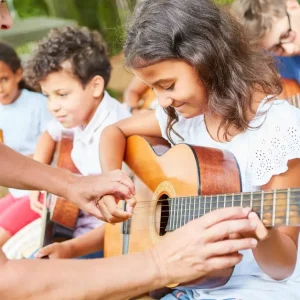Anyone who has ever learned a new skill or mastered a talent knows that it takes hours upon hours of practice to get there. They also know how worth it the effort is in the end when they have this awesome knowledge and expertise.
Unfortunately, just because the result will be great doesn’t mean our children will want to put in the work to get there. Getting a student to practice music can be a very difficult task. The nagging fight it can become often takes the joy out of the music and ruins the whole experience for everyone involved.
If you’re struggling with the question of what do you do with a student who doesn’t practice, we’ve got the answer to solve your problems. Read on for our top nine suggestions to make practicing music more exciting.
1. Give the Student Some Control
A good rule of thumb for trying to motivate children to do anything is to give them some of the control. Kids spend a lot of their time being told what to do and how to do it. This, naturally, makes them want to rebel where they can.
When you allow them to choose when, what, or how long their practice is going to be. It’ll give them the feeling of power over the situation which is very motivating.
2. Share the Benefits
There are so many benefits of knowing how to read and play music, even beyond just being able to perform pieces. It’s proven to help improve reading skills, memory, and the ability to focus.
For some students, being able to perform may not be exciting enough, it may even be something they dread doing.
So helping them understand how learning music will help them in other areas of their life can help push them to try a little harder.
3. Make Sure It’s the Right Subject
No one wants to put time, energy, and effort into something they know isn’t going to work out or that they don’t enjoy.
If your child is struggling with their music lessons, take a step back and make sure they have the right instrument. It could be that they would do better and be more self-motivated after a simple change of topic. Also, look into what easy instruments to learn are available so it’s not too difficult.
4. Be Realistic in Planning
Sometimes it’s easy as the adult in a situation to get carried away with the ideal or what we would be able to handle. It’s important to double-check yourself and make sure your expectations are realistic and doable for your child.
It’s important to remember that not every child is the same as well. Expectations may not be the same across each student and that’s okay. Cater to their personality and ability level. Even a little bit of practice is better than none at all!
5. Add Rewards to Routine
It’s human nature to be more likely to complete a task when we know there is a reward at the end. Children are especially motivated by rewards when it comes to practicing music.
Develop a system that gives the student some kind of prize or treat after they’ve completed the set amount of practice and watch how quickly they get it done. You’ll be amazed how just a little effort on your part will completely change the dynamic.
6. Stay Involved
When you’re in the thick of trying to figure out what to do with a student who isn’t practicing, it can be easy to want to give up and remove yourself from the situation. But resist this urge! Our Cello teacher was giving a cello lesson in maryland last week, and realized that her student had not been practicing for about 3 weeks now. We advised our instructor to stay strong and encouraging because the best lessons stick with students no matter what, and before they know it they can’t help but pick up an instrument all the time.
Staying involved, in a positive way, can help keep the need to practice in the forefront of the student’s mind. Ask questions about how practice went, what you can do to help, and what’s going well to create a good relationship surrounding the practice.
7. Try Group Classes
For some students, there won’t be anything as motivating as the possibility of being embarrassed in front of a group. Which is one of the reasons group lessons are a great idea!
More than that, group lessons allow students to work together and grow their love of the instrument together. The collaborative effort makes it feel more like a team sport than being on their own and bored. So many students thrive with this structure and completely change their attitudes.
8. Give A Lot of Encouragement
Positive reinforcement is one of the most effective tools when trying to get children to do anything, including practicing music. Hearing that you’re doing a good job and that someone sees your efforts can make all the difference.
Try to avoid harsh criticism and fighting about their practice (or lack thereof). It gives the whole experience a negative feeling that we want to avoid if at all possible. The more positive, the better!
9. Create Performance Opportunities
Lastly, give your student something to work for by scheduling several performance opportunities. This can be difficult depending on the instrument but the results will be worth the work.
Just like a sports team practices to be able to succeed during their games, your student will begin to put in more work to make sure they succeed in front of the audience. And what’s the point in knowing how to play beautiful music if you never get to share it?
Tips to Get Students to Practice Music (Willingly!)
Getting students to practice music is one of the hardest jobs for parents and their music teachers. But all of that work is well worth the effort as there are so many benefits of knowing how to read and play music.
There’s no substitute or gimmick that can replace having a great teacher. They’ll instill a love of the instrument into the child the will motivate them to work hard towards learning how to be proficient. The right teacher can make all of the difference and transform the whole experience.
If you’re looking for a great music teacher for your child, look no further! Contact us today to learn more about our programs and what we have to offer!








